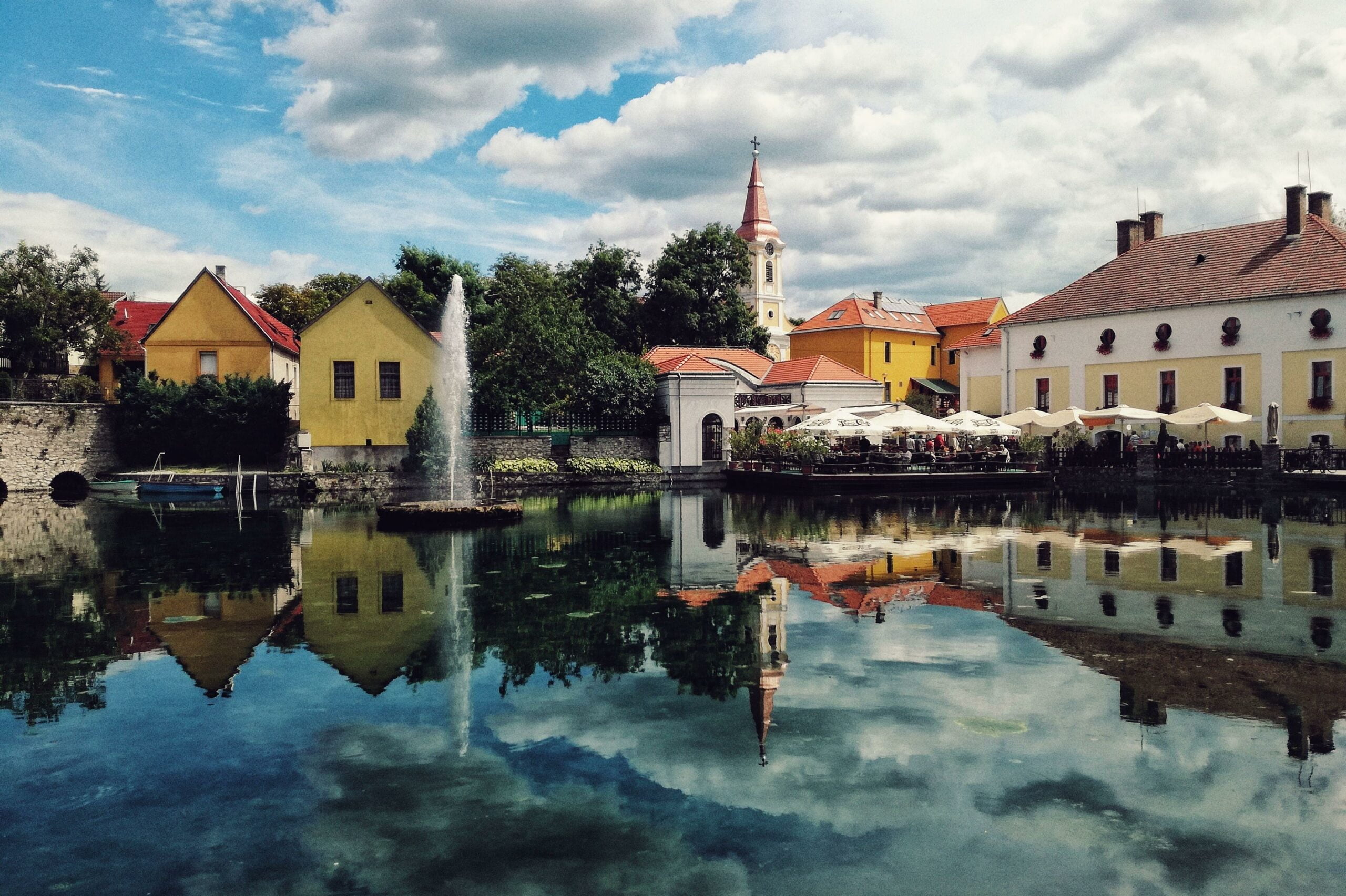Prepare to be captivated and chilled as we embark on a bone-chilling journey through the dark corners of Hungarian culture. In this article, we will unearth the hidden haunts and dive into the eerie and spine-chilling aspects that lie beneath the surface. As an experienced cultural researcher with a specialization in Eastern European cultures, particularly Hungary, I’m excited to share with you the scary facts that have remained shrouded in mystery. From ghostly superstitions to haunting legends and macabre traditions, get ready for a truly immersive experience into the terrifying world of Hungarian scares and chills.

Scary Facts About Hungarian Culture
Hungary, with its rich history and traditions, has its fair share of eerie and spine-chilling aspects that may not be widely known. Let’s delve into the hidden haunts and uncover some truly scary facts about Hungarian culture.
Dark Legends That Haunt the Land
Hungarian folklore is filled with tales of ghosts, witches, and other supernatural beings that have haunted the land for centuries. The chilling legend of the “White Lady” tells the story of a ghostly woman who roams the halls of castles, appearing as a harbinger of death or disaster. Whether these legends are true or not, they continue to send shivers down the spines of those who hear them.
“Legends of ghostly apparitions and otherworldly encounters have long bewitched the Hungarian imagination, leaving an indelible mark on the country’s culture.”
The Curse of the Blood Countess
One of the most infamous figures in Hungarian history is Countess Elizabeth Bathory, also known as the “Blood Countess.” This 16th-century noblewoman was accused of torturing and killing numerous young girls, believing that bathing in their blood would grant her eternal youth. The horrifying acts attributed to her have earned her a terrifying reputation, making her a chilling symbol of Hungarian macabre.
“The blood-stained legacy of Countess Elizabeth Bathory continues to send shivers down the spine, reminding us of the horrors that can lurk behind closed doors.”
Mysterious Folk Traditions
Hungarian folk traditions are steeped in a rich tapestry of myth and superstition. From the “soul-cakes” left out for the dead during All Saints’ Day to the practice of tossing baby teeth onto roofs for good luck, these customs may seem whimsical, but they carry an air of mystery and the supernatural. These age-old traditions remind us of the deep connection Hungarians have with their ancestors and the spirit world.
“Hungarian folk traditions reveal a world where the boundaries between the living and the dead blur, allowing for a touch of the otherworldly to seep into everyday life.”
Haunted Places of Hungary
The haunting presence of the past echoes through the abandoned halls and crumbling ruins of Hungary’s haunted locations. One such place is the “Museum of the Romani Holocaust,” which stands as a somber reminder of the horrors suffered by the Romani people during World War II. These locations, steeped in tragedy and sorrow, serve as chilling reminders of the darker aspects of Hungarian history.
“In the cobwebbed corners of Hungary’s haunted sites, whispers of the past can still be heard, reminding us that history never truly fades away.”
Macabre Traditions
Hungarian culture has its fair share of macabre traditions that might send a shiver down your spine. The “busójárás” festival in the town of Mohács is a prime example. During this event, locals don eerie masks and costumes, symbolizing the expulsion of winter and the arrival of spring. This peculiar festival has an eerie quality that can transport you into a world where ancient rituals and the supernatural meet.
“Hungarian macabre traditions offer a glimpse into a realm where darkness and celebration merge, reminding us that there is beauty to be found even in the shadows.”
The Allure of the Unknown
The allure of the unknown has always captivated our imaginations, and Hungary’s scary facts are no exception. From legends and curses to haunted places and macabre traditions, these elements of Hungarian culture tap into our fascination with the mysterious and the supernatural. Exploring these dark corners of Hungary’s cultural tapestry can be a thrilling journey into the depths of the human psyche.
“Beyond the familiar landscapes lies a world of fear and fascination, inviting us to embrace the unknown and unearthing the goosebumps of Hungarian culture.”
So, if you dare, join us on this chilling expedition and unearth the hidden haunts of Hungarian culture that are sure to send shivers down your spine. Are you ready to confront the macabre secrets that lie within Hungary’s dark corners?
“Beneath the surface of Hungary’s rich history and traditions lies a realm of scares and chills waiting to be discovered, offering a tantalizing glimpse into the shadows of Hungarian culture.”
Hungary is full of mysterious and chilling secrets that will send shivers down your spine. From haunted castles to eerie legends, this country has it all. Prepare to be spooked as you uncover the scary facts about Hungary.
One of the most bone-chilling facts is the story of the Blood Countess, Elizabeth Báthory. Known as one of history’s most prolific female serial killers, she is said to have tortured and murdered hundreds of young girls in the 16th century. If you dare, explore more about the horrifying crimes of Elizabeth Báthory and her dark legacy by clicking here.
If you thought vampires were only fictional creatures, think again. Hungary has its own vampire legend, known as the Vampire of Csejte. This terrifying figure, named Elizabeth Bathory, was believed to have drunk the blood of her victims to retain her youth and beauty. Discover more chilling details about this vampire and her reign of terror by clicking here.
Hungary is not just home to ghosts and vampires; it also has its fair share of haunted places. The Buda Castle is one such location. With a long and tumultuous history, this castle is said to be haunted by the spirits of past rulers and soldiers. Experience the spine-tingling stories surrounding the Buda Castle and its ghostly inhabitants by clicking here.
Don’t miss out on these terrifying tales and frightful legends about Hungary. Click the links above and delve into the dark and mysterious side of this enchanting country.
Scary Facts About Hungary Culture
Prepare to delve into the chilling depths of Hungary culture’s dark secrets. Uncover the unsettling truths that have been buried for generations, waiting patiently to be revealed. Brace yourself for the terrifying aspects that Hungary culture has hidden away, just beneath the surface. As you embark on this eerie journey, be sure to click the links below to discover the unimaginable secrets that lie within:
- Hungary culture dark secrets
- Unsettling truths about Hungary culture
- Terrifying aspects of Hungary culture
The mysteries of Hungary culture await your exploration. Don’t be afraid to uncover the chilling truth.
10 Fascinating Facts About Hungary
[youtube v=”7SQFXWQVWuw”]
Hungary is a country rich in culture and history, and while you may know some things about this European gem, there are plenty of surprising facts that might just astonish you. Let’s dive into 10 intriguing aspects of Hungary that you probably didn’t know before.
1. The Unique Horses and Herdsmen
In Hungary, they have their very own version of traditional herdsmen called chikosh. What sets them apart is the way they ride their horses in a distinctive fashion that showcases their rich equestrian heritage.
“The chikosh represent the deep bond between the Hungarian people and their beloved horses.”
2. Government-Approved Names
Believe it or not, in Hungary, parents of newborns have to choose their names from a pre-approved list provided by the government. This unique regulation ensures that all names reflect Hungarian cultural heritage and traditions.
“Hungary’s naming laws aim to preserve the nation’s rich linguistic and cultural history.”
3. A Language All Its Own
Hungarian is a truly distinctive language, and interestingly enough, it differs greatly from its neighboring languages. With roots believed to have originated near the Ural Mountains, the Hungarian language is a testament to the country’s exceptional heritage.
“The Hungarian language embodies the deep historical roots and independent identity of the Hungarian people.”
4. Abundant Thermal Springs
When it comes to thermal springs, Hungary is a true haven. The country boasts a record-breaking number of thermal springs, and its capital city, Budapest, has the highest concentration of these natural wonders in the world.
“Hungary’s thermal springs are a testament to the country’s geological richness and dedication to wellness and relaxation.”
5. Symbolic Flag Colors
Hungary’s national flag holds deep significance. The tricolor design portrays the country’s natural beauty and historical struggles. The green represents the lush rivers, the red symbolizes the bloodshed during battles, and the white embodies the majestic mountains.
“The Hungarian flag serves as a powerful representation of the nation’s history, nature, and resilience.”
6. The Genius Behind the Rubik’s Cube
Did you know that the Rubik’s Cube, the popular puzzle toy loved by millions, was actually invented by a Hungarian professor named Ernő Rubik in 1974? This iconic creation has entertained and challenged people worldwide for decades.
“Ernő Rubik’s ingenious invention has brought joy, frustration, and endless hours of entertainment to countless people worldwide.”
7. The All-Purpose Beverage: Pálinka
Pálinka is an alcoholic beverage that holds a special place in Hungarian culture. This potent drink was traditionally used by older generations to cure various ailments, ranging from sleepiness to headaches.
“Pálinka showcases Hungary’s rich gastronomic heritage, with its unique flavors and therapeutic tradition.”
8. The Origins of Budapest
The name Budapest has an interesting backstory. It actually originates from three distinct cities – Buda, Pest, and Óbuda – which merged to form Hungary’s charming capital as it is known today.
“Budapest’s name reflects its historical roots and the unification of three vibrant cities into a single cosmopolitan hub.”
9. Europe’s Largest Synagogue
Hungary is home to the largest synagogue in Europe, the Dohány Street Synagogue. This magnificent architectural wonder stands as a testament to the country’s vibrant Jewish community and its rich religious heritage.
“The Dohány Street Synagogue stands as a symbol of religious tolerance, cultural heritage, and the resilience of Hungary’s Jewish community.”
10. Breaking Down Borders
During the tumultuous Soviet era, Hungary became one of the first Eastern Bloc countries to open its borders to Western countries. This groundbreaking decision marked a turning point in the region and ignited the winds of change.
“Hungary’s decision to open its borders was a milestone in Eastern Europe’s journey towards freedom and democracy.”
Hungary is a country of hidden treasures and unique traditions. From its distinctive language to its breathtaking thermal springs, this nation is full of surprises that captivate the imagination and leave an indelible mark on all who visit.
FAQ
Question 1
What are some lesser-known scary aspects of Hungarian culture?
Answer 1
Hungarian culture is rich in eerie and spine-chilling aspects that may be less-known to the world. From local superstitions to haunting legends and macabre traditions, Hungary has a darker side that can send shivers down your spine.
Question 2
How old is Hungary as a country?
Answer 2
Hungary is one of the oldest countries in Europe, founded in 895. Its long and storied history adds to its mystical atmosphere and contributes to the scary facts hidden within its culture.
Question 3
What is the significance of Hungarian thermal spas?
Answer 3
Hungary is renowned for its thermal spas, with over 1,500 in the country. While these spas are known for their relaxation and therapeutic qualities, they also hold eerie tales and legends associated with them. Exploring the haunted histories of these spas can be a spine-chilling experience.
Question 4
What is the role of Csikos in Hungarian culture?
Answer 4
Csikos, Hungarian cowboys, entertain visitors in the Hungarian Great Plain with their performances. However, beneath the colorful and lively exterior, Csikos performances sometimes delve into the realm of the macabre and supernatural, incorporating elements that can send chills down the audience’s spines.
Question 5
How does Hungarian folklore contribute to its scary culture?
Answer 5
Hungarian culture has a deep love and respect for its heritage and traditions. Within its folklore lie numerous spooky tales, haunted places, and creatures of the dark. Exploring these folklore elements allows one to unearth the hidden haunts and scary facts that shape Hungarian culture.
- Unlock 6000+ words beginning with he: A comprehensive analysis - April 20, 2025
- Mastering -al Words: A Complete Guide - April 20, 2025
- Master Scrabble: High-Scoring BAR Words Now - April 20, 2025
















